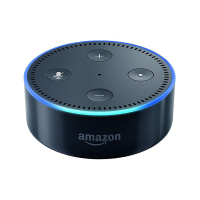Smart Home Commands
So far, we have became familiar with some of the smart skills, called "Assistive commands", from here on,
the commands for controlling smart devices will be described. (Summary of commands is listed in
Appendix C)
To understand the commands: keywords, options, and not sensitive words are displayed with appropriate
colors.
Lights ON / OFF Command
The command below is used to turn on or off the tools introduced in the system and it can be said that
almost all smart devices used in the smart building support this command.
The key word for this command is
Turn on
and
Turn off
. And its form of use is as follows:
Turn on /
Turn off {place.pos.device}
{place.pos.device} Turn on /
Turn off
Turn {place.pos.device} on /
off
In the following examples how to use this command is specified, also instead of Turn On and Turn off, you can also
use the
Switch On
and
Switch offs
.
Turn off the TV
Turn the TV off
Plug turn off
Turn off the bedroom's lamp
Turn on the lamp of bedroom
Turn the lamp of bedroom on
Lamp of bedroom turn on
Switch on the fan of kitchen
The saloon's first Fluorescent Switch of
As seen, because the words Turn on and Turn in the structure of English are two-part verbs (detachable),
different grammatical states can be used for these two orders, but it is better to use the simpler and more
correct types of keywords to execute Use the commands, as well as the correct way of tuning the tool with
the corresponding position and position that improves Alex's listening (the following two examples are
closer to the original model)
Turn off {place} {pos} {device}
[ turn off model ]
Turn off the TV
[ turn off {null} {null} {device} ]
Turn off the bedroom's lamp
[ turn off {place} {null} {device} ]
The important thing is that {place} , {pos} may be null in their command, but the {device} cannot be null,
unless a device has previously been registered in the cache to allow it to be replaced by an empty device.
In other words, if the go to command is used to select a location or device, or the last command is for the
same device (given the name of the device and its location in memory), you can place it without the name
of the tool statement For example, if the last command is “Turn on the saloon TV” and now you want to
turn it off, just say "Turn off that" or even say "Turn off" is only enough, but If the {place} {pos} {device}
values are null, then the last place and devices in the memory will be placed instead of them to complete
the command.

